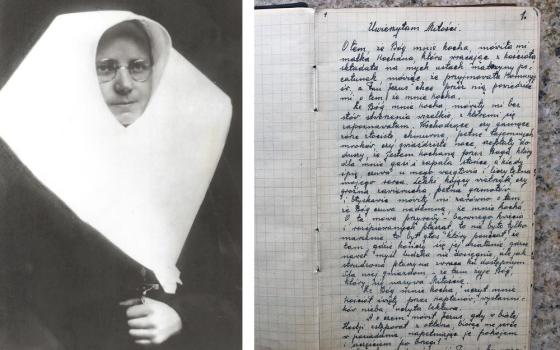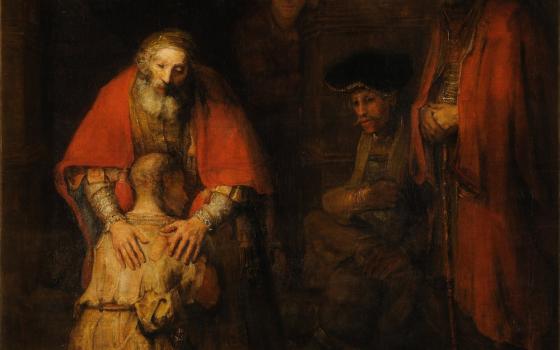Author seeks snapshot of modern Catholics in parishioners’ resistance to closings
NO CLOSURE: CATHOLIC PRACTICE AND BOSTON’S PARISH SHUTDOWNS
By John C. Seitz
Published by Harvard University Press, $39.95
In 2004, two years after Boston archdiocese Catholics were rocked by the clerical sexual abuse revelation and the hierarchy’s cover-up, they were told more than 80 parishes would need to merge or close. The reasons included changing demographics, financially unstable parishes, and some churches in disrepair. Though the majority of the 28,000 affected Catholics quietly moved to their assigned “receiving” parishes or found other spiritual homes, some chose not to obey the archdiocese’s closure decrees. Resisters in nine parishes took physical custody of their beloved churches and began an occupation that would continue, in some cases, until today.
I regularly drive by one suburban church still occupied: the banner in front of St. James the Great Church in Wellesley, Mass., proudly proclaims it has been in vigil for more than 2,300 days. While I feel a mix of amazement and admiration for their parishioners’ perseverance, I wondered why, when other parishioners moved on, they and other resisters chose to occupy the churches and why they persist.
In his book, No Closure: Catholic Practice and Boston’s Parish Shutdowns, John C. Seitz sets out to answer not only these questions of why, but also to ponder: What does the resistance to church closings tell us about modern Catholics?
In three and a half years of research, Seitz, an assistant professor of theology at Fordham University in New York, visited the churches with round-the-clock vigils, and interviewed some 50 resisters, pastors and other Catholics.
 Like a journalist embedded with troops behind enemy lines, Seitz’s fieldwork created close ties between him and the vigilers. At times Seitz even took up the duties of the resisters, cleaning and repairing objects in the church, collaborating on a photo documentary of items in Our Lady of Mount Carmel Church in East Boston, and even single-handedly manning vigil shifts. This familiarity with the vigilers might have posed a problem were Seitz evaluating the closures’ validity. However, No Closure is “not an attempt to evaluate the propriety or impropriety of the shutdowns,” he wrote, but to provide a Boston snapshot to set in the broader landscape of American Catholicism.
Like a journalist embedded with troops behind enemy lines, Seitz’s fieldwork created close ties between him and the vigilers. At times Seitz even took up the duties of the resisters, cleaning and repairing objects in the church, collaborating on a photo documentary of items in Our Lady of Mount Carmel Church in East Boston, and even single-handedly manning vigil shifts. This familiarity with the vigilers might have posed a problem were Seitz evaluating the closures’ validity. However, No Closure is “not an attempt to evaluate the propriety or impropriety of the shutdowns,” he wrote, but to provide a Boston snapshot to set in the broader landscape of American Catholicism.
While the anger among Boston resist-ers is palpable, the clergy sex abuse scandal is the likely reason the vigils had such a widespread stronghold here compared to elsewhere in Catholic America. The archdiocese, with declining priest numbers and some parishes in the red, was already losing Catholics for a number of reasons, including changing demographics. Our Lady of Mount Carmel was one of those urban, ethnic parishes that once had more than a thousand families and hundreds of baptisms and marriages a year. By 2003 it was down to 304 people for Mass each weekend. Overall, by 2001 Boston church attendance had plummeted to 17.5 percent. The following year it was 14.9 percent. In 2000, parishioner giving for the annual appeal was $17.2 million; two years later, $8.8 million.
Vigilers felt the closure process was flawed. Seitz notes the Vatican did reprimand the archdiocese for failure to follow canon law for closings, and “in mislabeling merged parishes as ‘suppressed,’ the archdiocese applied the wrong canon and seized the assets of closed parishes for itself.” Vigilers believed they were targeted because of their parishes’ assets, or their “independent-minded priests.” Seitz quotes them unapologetically comparing Boston Cardinal Sean O’Malley and his lieutenants to Hitler, mobsters, communists and Washington bureaucrats, but he finds the reasons behind the vigils complex and nuanced. “The occupations brought new life to conflicts that had been lingering since the mid-20th century -- over authority, sacrifice, sacred presence, and belonging -- by pitting Catholics against some of their leaders on a matter of great mutual urgency.”
The Catholic-schools-educated re-sisters, generally born between 1930 and 1960, had witnessed the transformation of the Mass from Latin to English, and had seen the decline in popularity of the sacrament of penance and Marian devotions. In the closed churches, they recited the rosary daily and held weekly Communion services with consecrated hosts (provided confidentially by sympathetic priests).
The resisters made it clear to Seitz that they saw their occupations not as protests but as vigils, a form of stewardship. Seitz tells us that language and directives from the Second Vatican Council inform much of the action and rationale of the resisters: “A new, mature, independent laity is emerging and we are its vanguard.”
In fact, Seitz adds, the resisters were eager “to prove themselves ‘more Catholic’ than the hierarchy. Maintaining standards over the use of sacred space became a way to assert superiority over the hierarchy who, they reasoned, just wanted to shut down the parish and desanctify it once and for all.”
The legacy of Vatican II (1962-65), samples of parish bulletins and booklets Seitz culled from the 1980s and ’90s, and directives from “progressive” pastors all emphasized the rewards, sacrifice and duty of parish ownership among the faithful. In the decades that followed Vatican II, ownership of the parish was encouraged and a seamless connection was cultivated between the church as the people of God and the local, physical church buildings.
Is it any wonder that these same people of God reacted the way that they did when someone outside the parish said he was closing their church and dispersing its sacred objects?
Note: The Boston archdiocese revoked the closure of St. Albert the Great, which operates as a full parish today. On Sept. 30, the archdiocese sold St. Jeremiah’s church building, parking lot and rectory for $2 million to the Syro-Malabar diocese, a part of the Eastern Catholic Church. The Vatican denied a final appeal by the former St. Jeremiah parishioners and the vigil ended. The archdiocese has relegated six remaining churches to profane use in preparation for sale. Vigils continue in three of these churches today, including St. Frances Xavier Cabrini Church in Scituate, pictured above.
[Kathleen L. Sullivan is a writer from Boston.]



